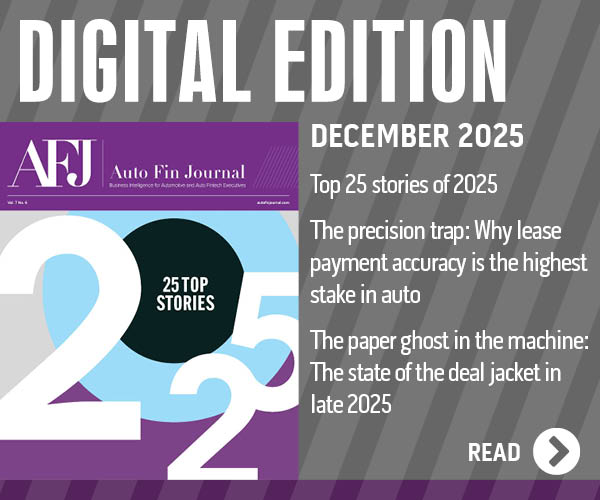TransUnion unveils tool to reduce losses from false positives during fraud detection process

By subscribing, you agree to receive communications from Auto Remarketing and our partners in accordance with our Privacy Policy. We may share your information with select partners and sponsors who may contact you about their products and services. You may unsubscribe at any time.
Perhaps as frustrating to auto finance companies as fraud infiltrating its portfolio is an applicant that might be OK, but somehow tripped a trigger inadvertently, and the potential paper went into the electronic trash.
To help limit the more than $100 billion of global sales revenue lost to false positives during the fraud detection process, TransUnion announced the launch of TruValidate Device Risk with Behavioral Analytics.
The solution is newly fortified by NeuroID’s behavioral analytics and aims to help businesses stop fraud — not good customers — based on device recognition, context, device and user behavior.
TransUnion highlighted the solution builds trusted connections by allowing users to join a global network of 6,000 fraud and security analysts, more than 10 billion known devices and more than 100 million detailed known fraud reports.
TransUnion’s TruValidate Device Risk with Behavioral Analytics is configurable, enabling users to measure the risk of a device and user by combining device intelligence and applicant behavior signals powered by NeuroID to their unique fraud challenges.
“Leveraging the right solutions to prevent fraud and identity theft is paramount to any business. In today’s dynamic economy where consumers often have many choices, it’s just as important to prevent a false positive wherein a ‘good’ customer may be turned away due to faulty technology or data,” said Shai Cohen, senior vice president and head of global fraud solutions at TransUnion.
Subscribe to Auto Remarketing to stay informed and stay ahead.
By subscribing, you agree to receive communications from Auto Remarketing and our partners in accordance with our Privacy Policy. We may share your information with select partners and sponsors who may contact you about their products and services. You may unsubscribe at any time.
“With the addition of NeuroID behavioral analytics technology to the TruValidate suite of solutions, our customers have access to an array of comprehensive and integrated tools to help them improve fraud detection while ensuring false positives are mitigated earlier in the customer journey,” Cohen continued.
TransUnion and NeuroID first partnered in 2020 to help insurance carriers find new ways to support customers, improve the customer experience and detect and prevent fraud. Key elements within the new solution include Behavior Insights, powered by NeuroID and Insights Center, powered by NeuroID.
TransUnion explained this technology uses behavioral analytics to help determine whether an applicant is genuine or risky based on how familiar the applicant is with the data that they are entering into a digital application. The proprietary process immediately can help enable deep visibility into a user’s unique digital interactions without collecting any personal data from the applicant.
“In addition to real-time scoring of individual applicant behavior, we also aggregate all behavior observed in an application to monitor broader behavioral trends. This aggregated data is displayed through a near-real time dashboard to help businesses more easily understand the behavior patterns of their risky and genuine applicants at scale — without requiring the support of a robust data science team,” NeuroID chief executive officer Jack Alton said. “This enables customers to optimize their applications for the different types of users they receive — adding step-up for risky applicants and reducing friction for genuine applicants.”
These new features work in tandem with TransUnion Device Risk’s existing anomaly detection, location intelligence and device reputation and device behavior analysis to help increase fraud capture and actionability.
“The new solution features patented neuroscience technology which can assess how familiar users are with the personal information they provide to a financial institution. By analyzing this data in real-time, these products can help provide critical information as to whether a loan applicant’s intentions are genuine, or deceptive, without adding any additional friction to the process,” said Jason Laky, executive vice president and head of financial services at TransUnion.


